Clothing has always been one of my favorite avenues of self expression, providing a way for me to fit in (or out of) whatever environment I found myself. My love of fashion didn’t correlate with having style, as proven by my college years where I was decked out in khaki JNCOs and glittery butterfly barrettes. I struggled to fit in at my mostly-white elementary school, where I wore knock-off Keds from Payless, meticulously gluing the little blue rubber tabs from discarded pairs onto the backs of my new ones so that the kids would think I could afford the real thing (I couldn’t). At my Dad’s house, in a neighborhood literally on the other side of the tracks from where I lived with my Mom, I wore K-Swiss sneakers to better fit in with my black friends. I learned quickly that clothing was not only a form of self expression; it was also armor. I chose attire that helped me conform, attire that made me feel like I belonged, attire that didn’t belie the fact that I was poor.
As a kid I was good with my hands and very interested in creating things, but making my own clothing never even occurred to me until college. In order to meet the requirements for my Studio Art minor I had to take several design courses, and as luck would have it, costume design was on the list of classes offered. Turns out that I was not actually good at designing costumes at all, but I was great at constructing them! My first completed project in class was a gorgeous, embellished gown for Lady Capulet in our production of Romeo and Juliet, and although I had a lot of guidance from my teacher in the process, I still felt a gigantic sense of pride at what I had accomplished. Up to this point, my years in theatre were signified by my being onstage. I had built flats for theatre sets and done lighting design. I could work a sound board, direct a scene, and choreograph dancers for competitions. But none of those experiences felt as good as performing… until I built this costume.
The gown was comprised of several yards of red brocade fabric, with sheer sleeves that spilled out in huge silky puffs around the arms. The gown was cut low around the neckline and emphasized with gold braided ribbon so that Lady Capulet’s décolletage was beautifully, tactfully presented, and there was a break in the front of the dress where the deep brocade gave way to a smooth, drapey red fabric that floated around underneath. The dress was heavy as shit and probably really hot under those stage lights, but the actor who wore it never complained — I think she was thrilled to wear such a beautiful costume, and she looked amazing in it.

For Christmas that year my Mom bought me my first sewing machine, the cheapest Brother that Walmart sold at the time. I brought it back to college with me for spring semester, where I would sew in my dorm room late into the night working on personal projects.
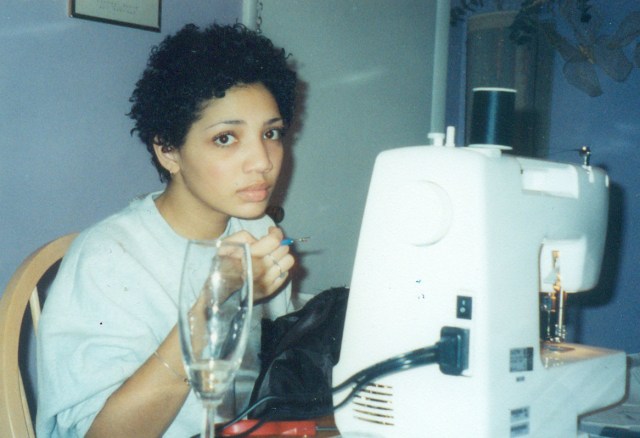
The very first garment I made for myself came from a Vogue pattern. It was a simple strapless summer dress with a darted bodice that attached to a slightly flared skirt, and it had a zipper in the back (which took me a REALLY long time to get right). I made it out of an earth-toned floral linen that I bought from Joann’s Fabrics, and I made a straight size in the pattern, meaning that I didn’t grade from one size to another or alter the fit at all. To my surprise, the dress fit me perfectly, and I was even more proud of it than Lady Capulet’s gown; I loved it because it was a wardrobe staple that didn’t look handmade or costume-y, and I had finally made something for ME! It’s been 14 years since I sewed that summer dress and it is still hanging in my closet, getting every bit as much wear as it did when I was in college. I don’t know what’s more impressive — the classic silhouette that has stood the test of time over a decade after it was made, or the fact that I can still fit into the thing. After all my years of sewing, I’m still convinced that this is the most perfect garment I have ever made.

My run of making awesome garments took a pretty long hiatus after the success of the Vogue pattern. There was the time I made a dress in light blue polka dot cotton that looked sort of okay but just wasn’t quite right. It was tight in the bodice and my fabric choice was all wrong, proving to be too stiff for the design of the dress which made the skirt stick out like a tent around my legs and the hem fold and gape. Although the fit was off, I still wore the dress because I was proud of learning how to gather fabric to create the neat little ruffles around the armholes, and I had gotten better at my zipper insertion. But the garment didn’t last very long in my closet.
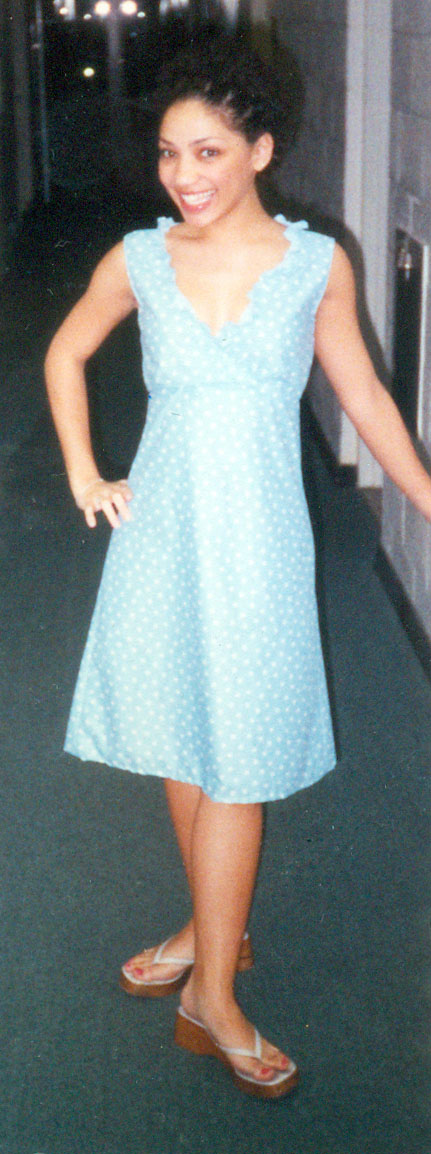
Then there was the time I made my costume for my theatre department’s annual masquerade ball! I went as a fairy and bought a pattern for a dress that I adapted to suit the needs of my design. I made a straight size of the pattern, but this time the fit was horribly off — way too big in every way. I hadn’t yet learned how to customize fit from flat pattern pieces, so when I tried the garment on and saw that it was huge, I just kept re-sewing the side seams to take in more fabric, as opposed to taking the pieces apart and recutting them and rearranging the darts. The costume was okay enough to wear to the event and I was proud to tell people that I had made it, but I wasn’t very comfortable in it. It bagged around my bust, was too big in the waist, and my wire and silk wings kept drooping and stretching out the back of the bodice; I spent the whole night hoisting it up because I was constantly on the brink of having a wardrobe malfunction.
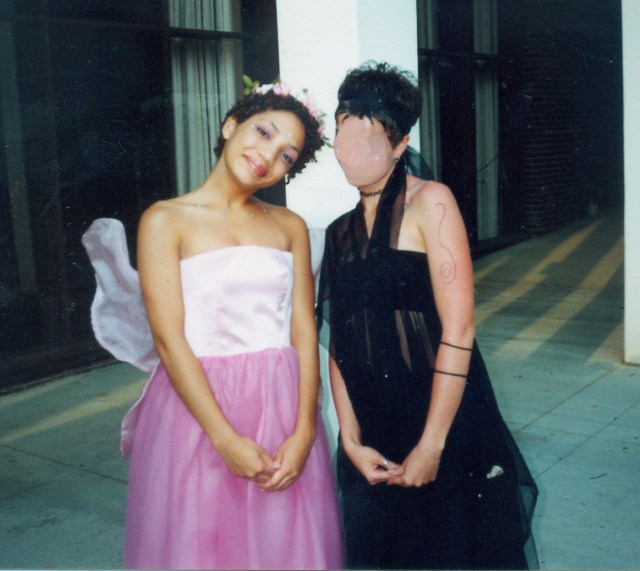
Oh! And then there was the time I became obsessed with the dress forms in the costume shop and would spend hours late into the night trying to draft my own patterns. I remember designing a piece consisting of a tiny scrap of sequined fabric that I snipped and fussed over and sewed until it fit the bust of the dress form perfectly. Then I sewed several skinny elastic straps to the back of it and called it my “Going To The Club” top. I wouldn’t have been able to breathe in this top without flashing my goodies, let alone go to the club and dance in it, so it never actually got worn, but I still carried it around with me and showed it off to my friends. I think even then I understood that getting good at sewing was a process, and despite my earlier triumphs, I still had a lot to learn.
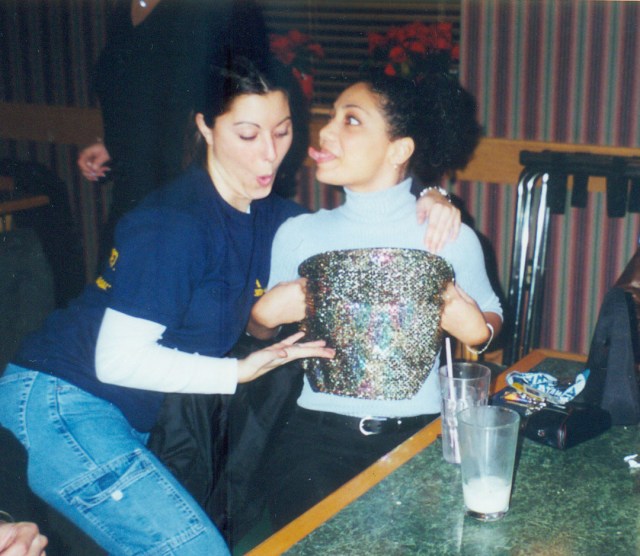
It took a while before I made something I was proud of again, but eventually I tried my hand at another Vogue pattern, a blouse made out of a stretchy woven material with a little bit of sheen. The style was perfectly suited to the early 2000s; a merlot-colored one-sleeved wrap top with an asymmetrical hem and a cut-out at the shoulder. It had a lot of competing design elements and it’s clearly not something that I would wear again in a million years, but for that little snippet of my life, it was my absolute favorite thing to wear. It fit me like a glove, and it really spoke to my sensibilities at the time — it was unique and cool and expensive-looking (well, expensive for a poor college student). At this point in my life I was beginning to feel more at-ease in my skin, and this shirt was a testament to how much my tastes and ideas about myself were maturing. In college I stopped struggling so hard to fit in like I had in high school, and I started experimenting more with how I could set myself apart. Despite the protests of my friends, I cut my long hair really short for the first time. I was just beginning to reject the beauty ideals that I had grown up with, proving to myself that I, a woman of color, didn’t have to have long hair to be feminine or pretty. I didn’t have to bare a lot of skin to feel sexy and desired. I could define my style on my own terms, and not feel ashamed or embarrassed if someone didn’t like it.

When I moved to NYC after college, my Brother sewing machine came with me, crammed onto the top shelf of a tiny closet in each of the seven apartments I lived in during my eight years there. I didn’t use it much because I spent most of my time either working or auditioning, so several years later, when my partner and I moved to Vancouver indefinitely for my work, I decided to leave it with the rest of our belongings in a storage unit in Brooklyn. But it was only a matter of months before I had replaced it with the ‘Euro-Pro Denim SEW-lution’, a used machine I bought for $40 at a going-out-of-business sale. I didn’t exactly need to have a sewing machine in my possession in Vancouver, but there was (and still is) something reassuring about always having one around. Plus, I’m not one to say no to such a great pun. During our first few years in Canada I didn’t accomplish much on the machine other than making curtains and hemming some vintage clothing, and I eventually found out that “Denim SEW-lution” was a complete misnomer (it could barely get through several layers of wool, much less hefty denim seams). But it had some good sewing mojo in it yet; it was on this machine that I made my first quilt, which I gave as a gift to my co-star’s new baby. I also sewed my first garment for my partner, a cute button-up made from a lovely quilting cotton that she picked out herself. The shirt was much too big for her and we ended up giving it to my Dad, but I didn’t consider it as a failure — after taking such a long hiatus from sewing, my interest in the craft had been re-ignited and I dove in again head first.
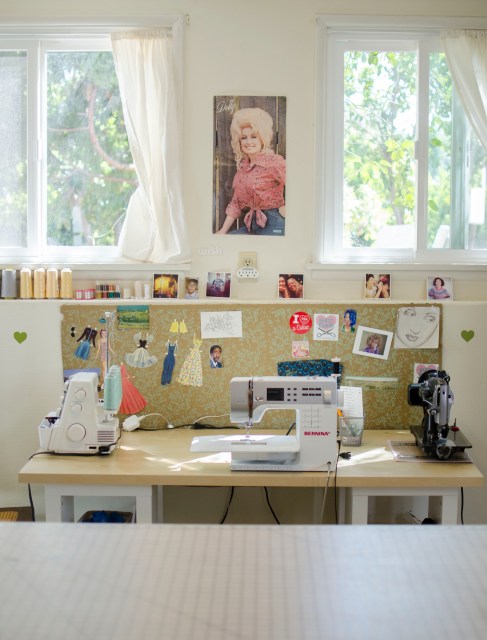
I discovered that after so many years away from sewing, there was now a booming online community of at-home sewers, and I read blog posts from all over the world by entrepreneurial individuals who were writing sewing books and designing patterns printable from home. My immersion into the indie pattern world began with Gretchen Hirsch, a sewing blogger who published a book of vintage-inspired patterns and construction methods, and she became my sewing guru. The first successful garment I made from Gertie’s Book for Better Sewing was the Wiggle Dress, and it marks the first time I put significant effort into ensuring that a garment would fit me. For starters, I made a muslin and worked on it for hours until it fit — something I had been too lazy to do before. A muslin is a piece of clothing you make from a pattern intended for fitting purposes only — you construct the garment as per the directions, then you adjust the pieces as necessary, usually using an inexpensive fabric or a lightweight cotton called muslin. I thoughtfully chose my garment fabric to make sure that it would work well with the design, and I learned a few new techniques in the construction of the dress, like making gussets so that there was extra fabric in the underarms to keep the dress from riding up when I raised my arms. I feel stunning when I wear this dress. I had spent decades thinking that I didn’t have the kind of body type that looked good in close fitting dresses like this, but when it was completed, I realized that that wasn’t true at all — I had just never before tried on a slim-fitting dress that actually fit my measurements. Learning how to create the clothes that fit my body instead of trying to make my body fit the clothes has been a powerful revelation.

Since making the Wiggle Dress I have become… well, obsessed. My style is more refined now because I can make virtually anything I want for the price of fabric and my time. I buy new patterns as fast as the indie designers can make them, and my arsenal of sewing machines has grown to include a Bernina 350, a Janome serger, and a beautiful Singer from the 1950s that my real estate agent insisted I rid her of. My cheap Brother machine is still going strong, too! Unsurprisingly, my shopping habits have decreased significantly since I traded visits to Bloomingdales for visits to fabric stores, but most importantly, I am learning about the concept of “slow fashion,” becoming increasingly aware of the poor impact that the global fashion industry is having on the environment and the lives of the garment factory workers they employ. Sewing began as a creative outlet for me, an activity that married my love for theatre with my love for DIY, but it has since progressed into a more nuanced understanding of my body, my style, and the consequences that my personal choices have on the world. Of course, sewing your own clothing isn’t going to singlehandedly solve the issues that the fashion industry is causing, nor is having the money, time, and skill set a privilege that everyone is afforded. Sewing has, however, made me more conscious of what I am supporting when I shop at a store, and it has affected the way I understand my participation in consumerism.

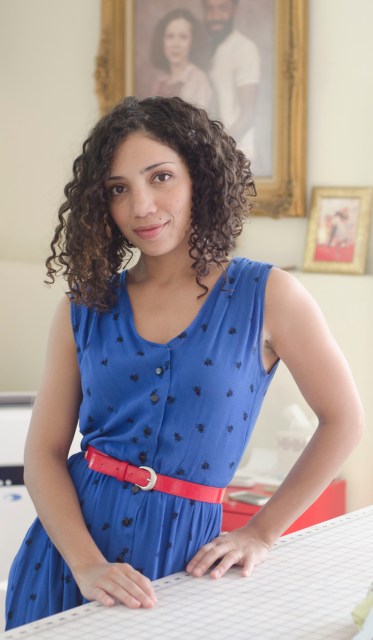
My goal is not to abstain from ever buying ready-to-wear clothing again, and I’m not particularly interested in hand-making every single item I wear for the rest of my life. But I would be lying if I said that wearing a store-bought item has the same significance for me as wearing something me-made; when I wear a dress that I put a lot of thought into — from choosing the fabric to cutting out the pattern pieces to making fit adjustments for my body — it shows. It shows in the way I carry myself, in the way I interact with others. The added oomph I get from wearing clothing I made with my own two hands outweighs that of wearing an item I bought from the store. Clothing is still a way for me to communicate to the world how I feel and who I am, but now that I have learned to make most of it it myself — everything from bras to jeans — clothing also makes me feel empowered. I might be having a shitty day that makes me feel inferior and daft, but at least I look amazing in this handmade dress! Hilton Al’s White Girls might have been so far over my head that I barely made it through a hundred pages, but hey, I know how to make shoes! The zombie apocalypse may be looming ominously in our future, but guess what — I’ll be able to knit all of us chunky sweaters to keep us warm in the darkest of winters!
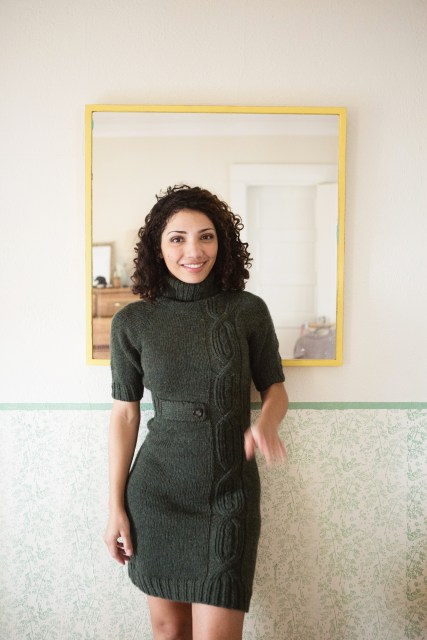
I haven’t worn my clothing as protection in years; now it serves as insight into the kind of person I am, the kind of person I want to be. My clothing is an invitation: Hey! I love horror novels and I know all the words to RENT! I am a queer biracial woman of color. I am creative. I am ambitious. I am an introvert. I have a lot of patience, with myself and with you. I am proud of myself and the things I make, but I am also enthusiastic about sharing my knowledge with others. Every time someone comes up to me at an audition and compliments me on what I am wearing, I thank them and tell them I made it myself. Their first question is always “Where can I buy your stuff??” I explain that, for a multitude of reasons, I don’t sell the clothing I make, but that I would be happy to teach them how to make something for themselves. And I mean it. I’m still waiting for someone to take me up on the offer.







